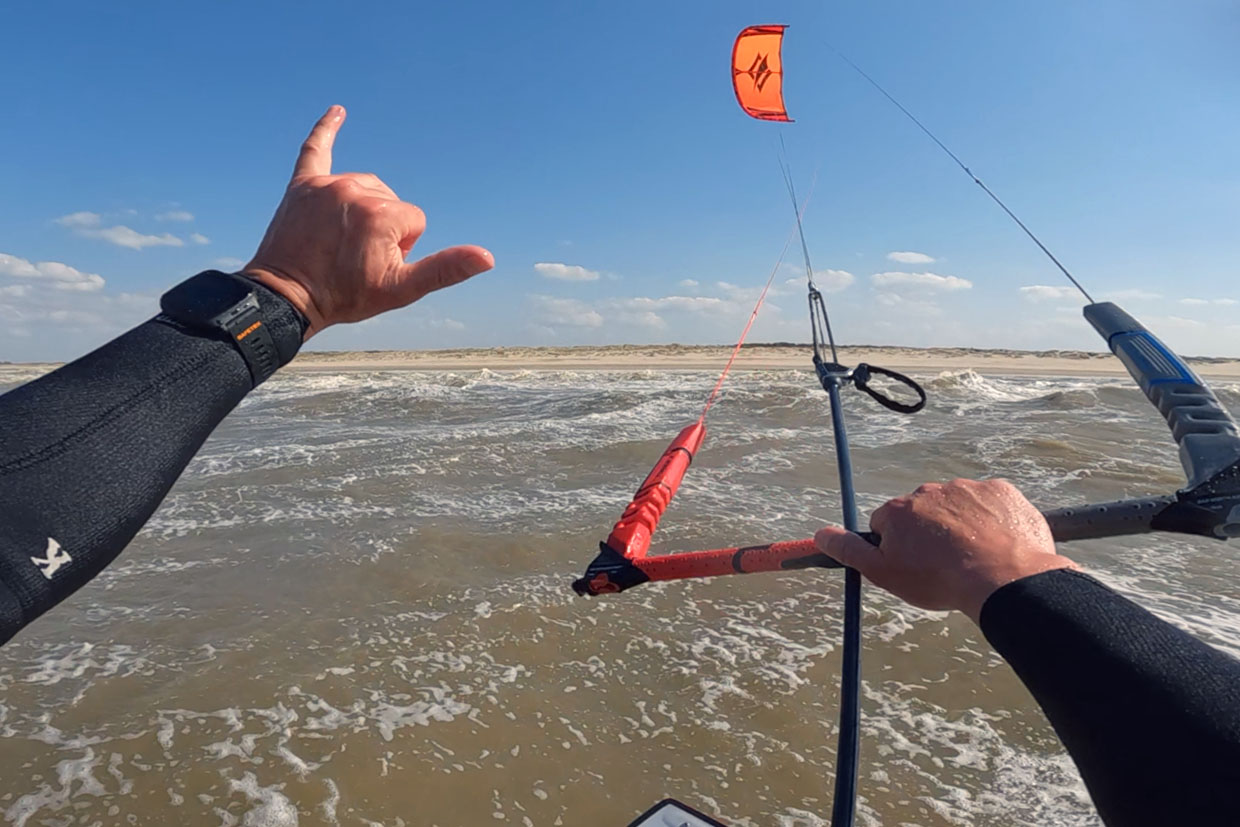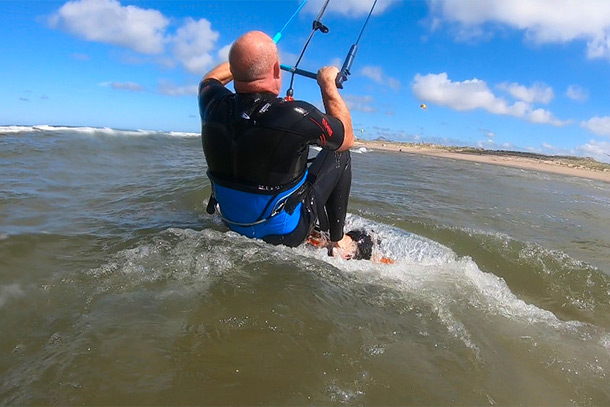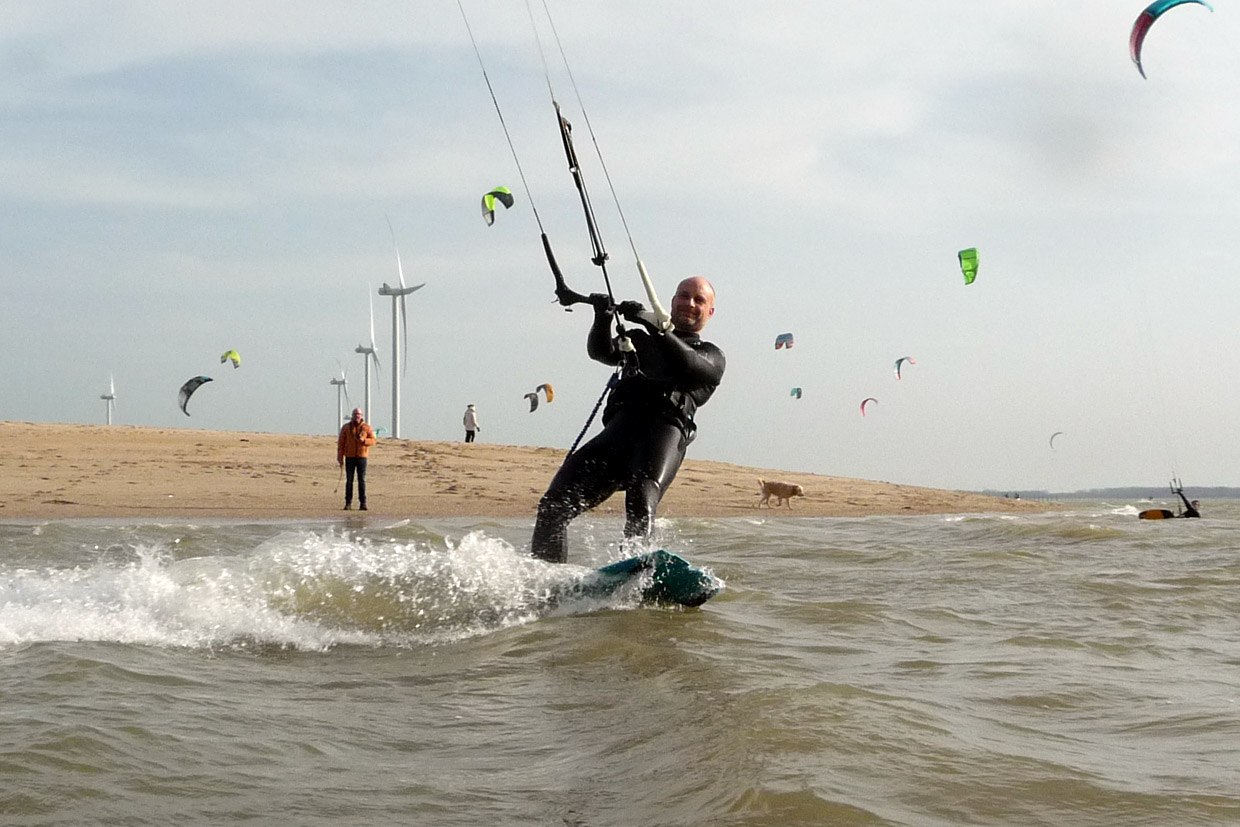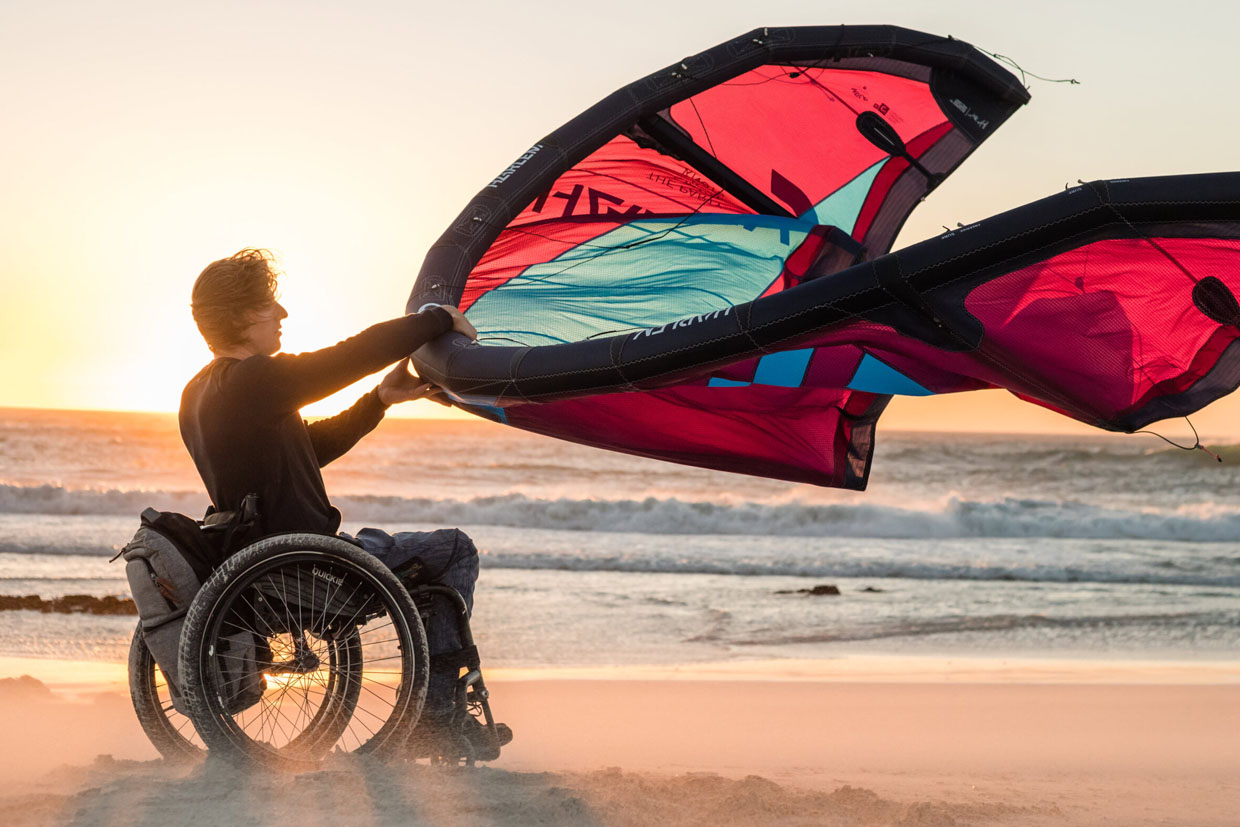As soon as kitesurfing on flat water kite surfers goes well, the sea often starts to pull. Kiting on a wild sea is really different than on inland water. However, there are also kitesurfing spots by the sea that are mild. For example, think of Brouwersdam and Oostvoorne. But other kite surfing locations by the sea sometimes have nice flat shallow parts at high tide. The switch from inland waterways to the sea is therefore really feasible. In this kitesurfing blog we help you take the step to kite surfing at sea.
Difficulty switching
Some kitesurfers have trouble making the transition from flat water to kitesurfing at sea. Not because they wouldn't succeed. No, it is the step itself that resists taking. On the one hand, it can be related to tension or a little bit of fear. On the other hand, with habit. If you enjoy kitesurfing on inland waters, why try something else. People don't easily step out of their comfort zone. Finally, travel distance can also play an important role. After all, not every kite surfer lives close to the coast.
Advantages and disadvantages of kite surfing at sea
Of course the sea can be very challenging and sometimes even a bitch. That is why respect and awe for the sea is in order. On the other hand, the sea can also provide a lot of kitesurfing fun. Kiting at sea has never bored us and the awe of the sea has only grown over the years. The main differences between kitesurfing at sea versus inland water are as follows.
Benefits
- At sea, the wind almost always blows harder and more stable than inland waterways.
- You often have much more space at sea than on inland waterways.
- On the beach you have sand and therefore no problems with slippery grass, mud and stones.
- The sea offers waves where you can do all kinds of fun things as a kite surfer.
- At the coast you have many kitesurf spots also pools of water. So you don't always have to go out on the rough open sea.
- There are often fewer obstacles on the beach than on kitesurfing spots inland.
- Conditions at sea are always different. It will not get boring quickly.
- The salty sea air, the beach and the coastal views are good for mental health.
Cons
- At sea you have to deal with current. That can be a pro and a con.
- At sea you have to deal with high and low water. At high water you have less space to launch your kite. At low tide you sometimes have to walk far to the sea. At some inland kitesurf spots you also have to deal with high and low water.
- The sea can certainly be a big mess when the water rises.
- Given the previous three points, planning your kitesurfing session at sea is more important than on inland water.
- Learning kitesurfing at sea is also possible, but it is more difficult than on inland water.
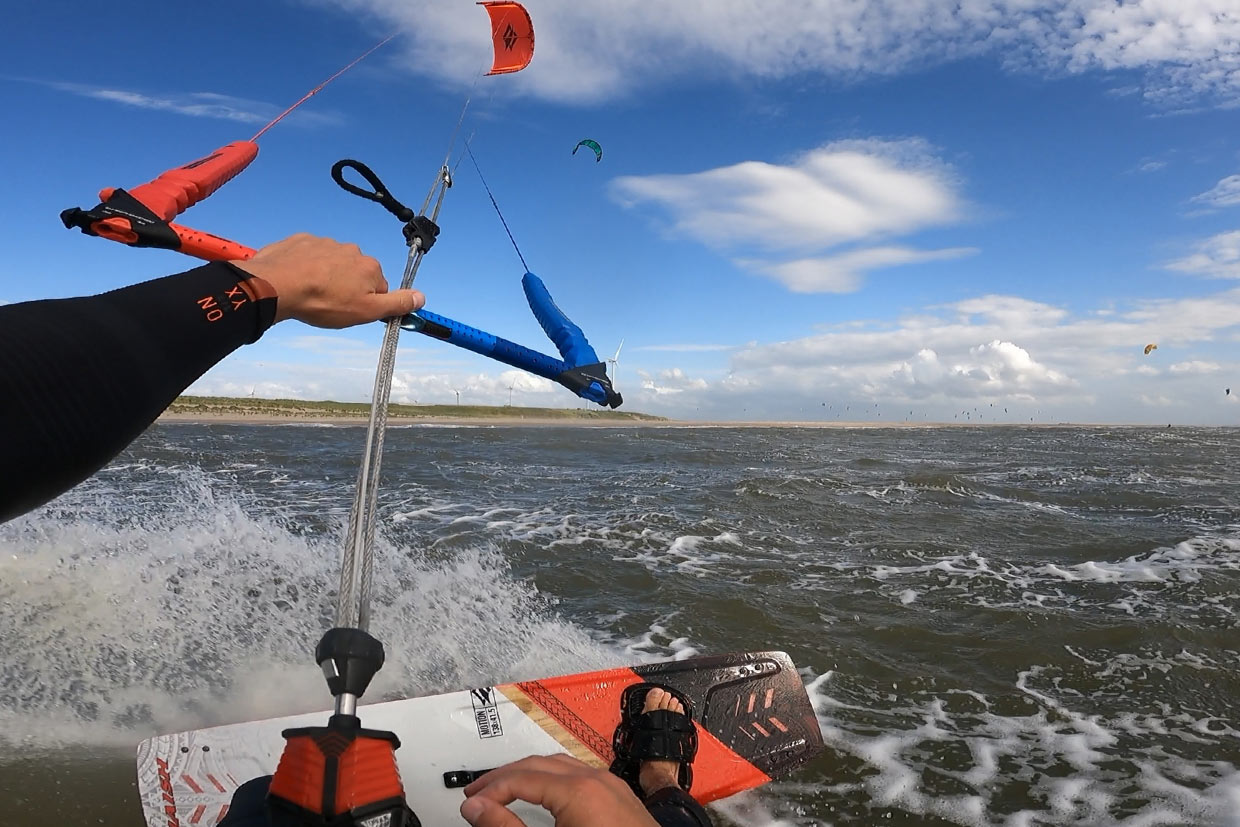
10 tips for kite surfing at sea
We have prepared 10 tips for kitesurfing at sea. It doesn't matter whether you want to start kiting your first meters at sea or have been kitesurfing at sea for a while and want to get better at it. If you follow these tips and principles, you can just have a lot of fun with kitesurfing at sea.
- Basic level kite surfing in order
- Do you have kitesurfing lesson had at sea. Then practice a few times on flat water until you can walk to both sides. In any case, you should be able to body drag and restart your kite if it were to crash. The sea is deep and generally the water is wilder than inland water. There is therefore a good chance that you will fall off your kiteboard. You must then be able to body drag to your kiteboard at sea. If the previous one is successful, you can in principle go back to sea. Grab your trusted one too kitesurf set† Even if you have the ambition to go wave kitesurfing later with a special surf/wave kite and ditto kite board at sea. Start with the kitesurfing equipment that you have become familiar and familiar with. This way you can better focus on things that are different on the beach and the sea from a familiar basis.
- Only kiting at sea with the right wind direction
- A favorable and safe wind direction. This applies to all places, but certainly by the sea. Read the options below.
- Safest: side-onshore wind. The wind blows diagonally towards the side. You will then leave, but you will always return.
- Less safe: side-shore wind† The wind blows parallel to the waterline. You can consider going, but be careful not to go too far out to sea. In this way you avoid having to pass the kite spot floats and therefore does not come ashore automatically.
- Sometimes safe: onshore / onshore wind† The wind is right on the side. You run the risk of being pulled over if something goes wrong. Is it far shallow but deeper than knee-depth? Then there is still a safe distance to the shore and you can kite.
- Not safe: offshore / offshore wind† The wind is blowing from the side. This is a no-go because if the wind is too strong or something goes wrong it can become impossible to get back ashore.
- Do the spot check on location
- There is a lot to read online about the different kitesurf locations by the sea. This information helps to orientate you but is not always up to date. Beaches also sometimes have seasonal rules.
- Therefore, view the instruction board of the municipality at the beach entrance. This gives you specific information and regulations about what is allowed and what is not.
- Also check out the sailing routes of other kite surfers. Is there a pattern in this because, for example, they always kitesurf in the same course? Then there may be a reason for this. Feel free to ask kite surfers who come off the water what their experience has been or for advice. Ask them if there are important things you need to know such as a row of posts that you don't see at high tide but is there. This is often the best information.
- You should preferably go to a new spot with a buddy. If this doesn't work, make contact with a few other kite surfers and ask if they want to be your buddies. More about this under point 5.
- Be familiar with the kitesurfing rules
- You don't want to get into trouble at sea, and certainly not because of stupidity. Therefore, make sure that you have the kitesurf priority rules knows well. Of course, accident prevention is more important than the rules. But if everyone adheres to the rules, at least there are no collisions while kiting.
- Never go out to sea alone and do not start out on the open sea in winter
- No matter how long you drove. Don't go out to sea alone. So you make sure you have a buddy with whom you go kitesurfing or stay close to other kitesurfers. It is not recommended to make the switch from kitesurfing from inland water to sea in winter. Also view special kitesurfing in winter† We recommend starting kitesurfing at sea from May, when the water and outside temperature is a lot more pleasant. Even very experienced kite surfers do checks and make a plan before they decide to go out to sea in winter.
- Choose the right time for the water start
- To set sail at sea you have to choose a good moment. It makes no sense to put on your kiteboard if a wave is close by and breaks. Then you are easily pushed around your kiteboard and you can start again. It is best to wait until a surf wave has passed. Then go straight into your foot straps and steer the kite. So you are kitesurfing before the next wave hits you.
- Stay behind the surf in the beginning
- Kitesurfing through a strong surf is a challenge in itself. Very cool but maybe just a little too much of a good thing in the beginning. Behind the surf, the sea is often a lot calmer and there is mainly swell. It is therefore wise to stay there in the beginning, once behind the surf. Whenever you sail back to shore, you can turn before the surf.
- Sometimes it can be useful to first body drag through the surf and only then start kitesurfing. For example, if the surf is strong with a close onshore wind in combination with high tide. The waves then literally break on the shore. You then have little space and time to water start without ending up directly in the surf.
- Wave on kite is slightly up and knees retracted
- Every wave is a potential ramp for a jump. You are certainly not waiting for this in the beginning. Then you want to keep control while kiting. And maybe you don't like jumping at all. That is why it is important to steer your kite slightly up and depower at the top of the wave. If your wave already consists of sparkling water, then you will have to tighten the bar slightly. The moment you hit the wave, pull your knees in too. Behind the wave, straighten your knees again. Dose this so that you keep continuous contact with the water with your kiteboard. Once on the wave, you also send the kite down a bit and tighten the bar again. This way you won't be launched on every wave.
- You can also avoid a wave by jumping over it with a small jump. A kind of skateboard 'ollie' but with the help of the kite. This movement in combination with the kite high and the pull of the bar allows you to jump yourself over the top of a wave with a low jump.
- Avoid waves that break or are too big
- You would rather not brave a wave that breaks. The power and impact on your body is enormous. The advice is: either turn around in time and kitesurf ahead of the wave; or dodge the wave. This can be done by trying to get to the piece of golf that is not breaking yet or the piece that has already broken.
- Can't escape a breaking wave? Then brace yourself because waves are very powerful. It could be that the wave flips over and your letter crashes through the wave. Bam! That has an impact. The following also applies: send your kite up a bit and at least depower at the top of the wave or when you are in the middle of it. Also pull in your knees. Behind the wave, or once through it, straighten your knees again. Dose this so that you keep continuous contact with the water with your kiteboard. Once behind the wave, you also send the kite back in and tighten the bar again so that you have enough power to continue kitesurfing.
- Kitesurf not too far out to sea
- You can cover enormous distances in no time when kitesurfing at sea. It is important to be aware of this. The advice is to kit out as far as you can swim back yourself. Overestimation is lurking. You really don't swim that easily at sea and if the current works against you, it immediately becomes more difficult. In the winter you sail even less far† On the other hand, it is also important to keep a safe distance from the shore. You are also not waiting for a belly slide to the side. This is a risk when your kiteboard gets stuck in the sand in front of the side. However, the biggest risk is often on the beach itself. The advice is kite low, don't make mistakes when rigging and time well when lowering and raising quickly. The kitesurf priority rules elaborate on that.
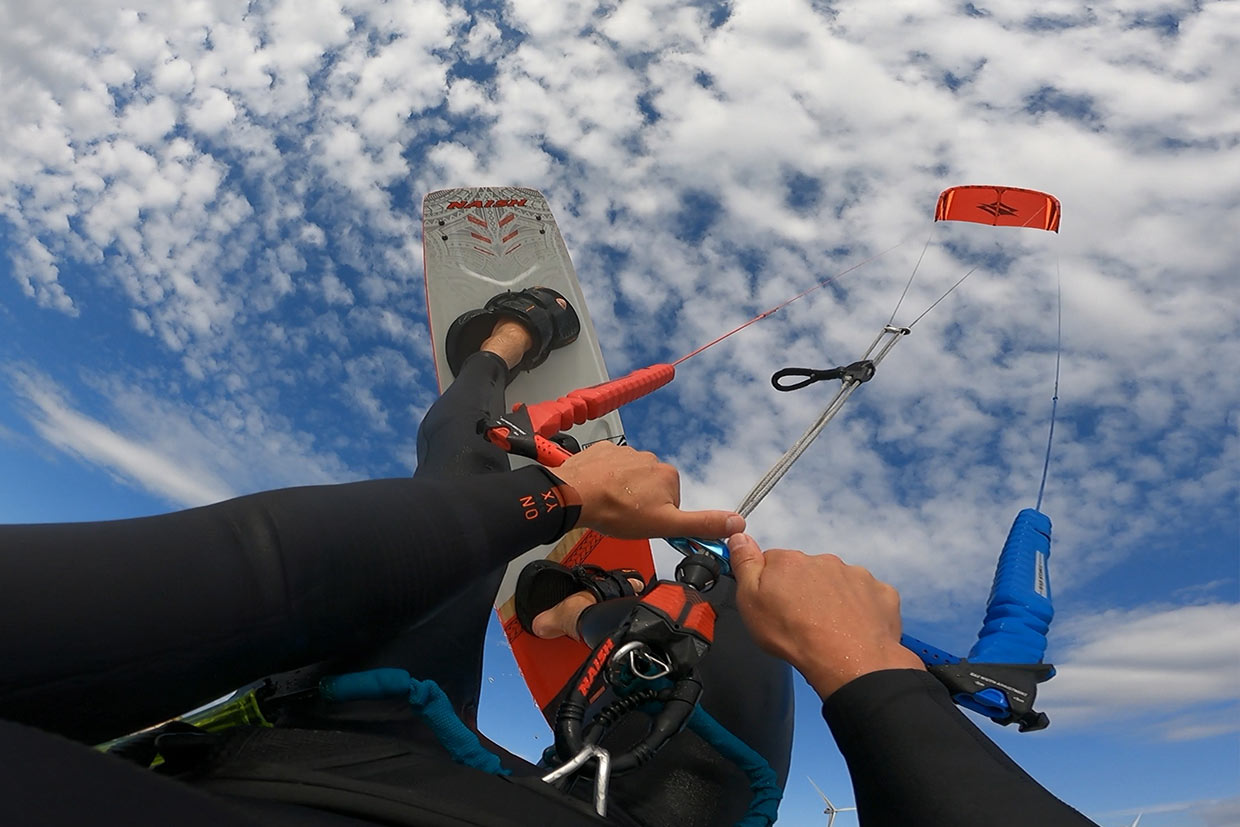
Learn extra tips for kiteboarding at sea
On ridersguide.nl, Access Kitesurf Magazine has tips & tricks in which two experienced kitesurfing teachers, Guido Nijzink and Mike Kranenburg, were asked for advice on kitesurfing at sea. They also explain what you need to do to make your first few meters at sea safely and with pleasure. Read in the article the tips about kite surfing at sea.
Conclusion kitesurfing at sea
These were our 10 tips for kite surfing at sea. Hopefully it will help you. Of course kite surfing at sea is more difficult than on inland water. However, the wind is often more stable and the sea often offers even more fun and challenge. In addition, you have to get rid of the image of a 'flat water pilot'. 😉 Just kidding, because our opinion is something for everyone ...


